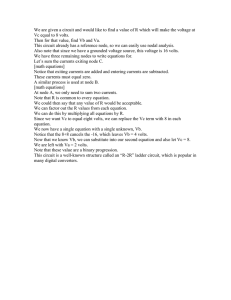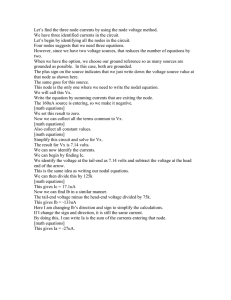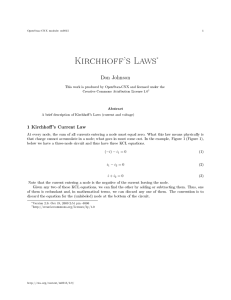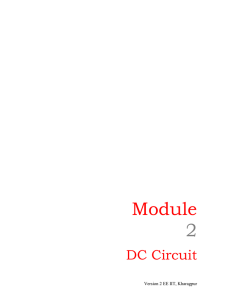Power System Representations
advertisement
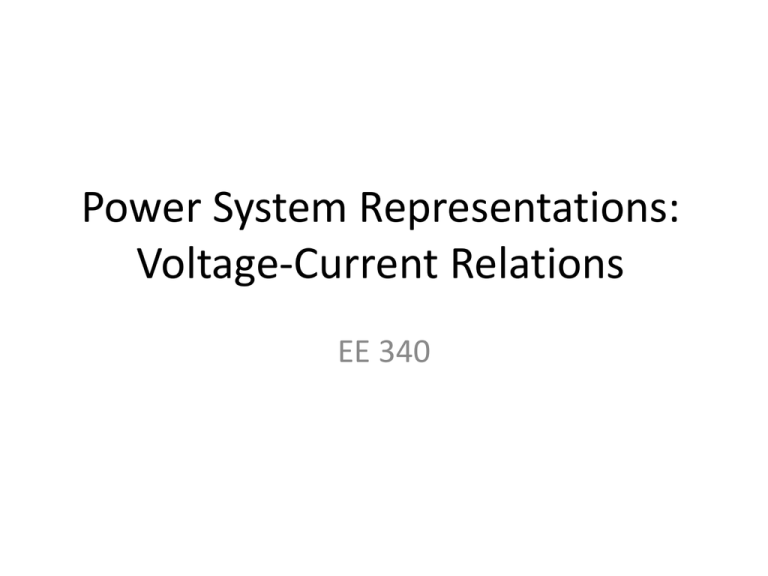
Power System Representations: Voltage-Current Relations EE 340 One-line diagram (simple power system) • Machine ratings, impedances, consumed and/or supplied powers are usually included in the diagrams Per-unit equivalent circuit • Real power systems are convenient to analyze using their perphase (since the system is three-phase) per-unit (since there are many transformers) equivalent circuits. • Recall: given the base apparent power (3—phase) and base voltage (line-to-line), the base current and base impedance are given by Per-unit system • The base apparent power and base voltage are specified at a point in the circuit, and the other values are calculated from them. • The base voltage varies by the voltage ratio of each transformer in the circuit but the base apparent power stays the same through the circuit. • The per-unit impedance may be transformed from one base to another as Example Example (cont.) Node equations • Once the per-unit equivalent circuit is created, it can be used to find the voltages, currents, and powers at various points . • The most common technique used to solve such circuits is nodal analysis. To simplify the equations, – Replace the generators by their Norton equivalent circuits – Replace the impedances by their equivalent admittances – Represent the loads by the current they draw (for now) Node equations • According to Kirchhoff’s current flow law (KCL), the sum of all currents entering any node equals to the sum of all currents leaving the node. • KCL can be used to establish and solve a system of simultaneous equations with the unknown node voltages. • Assuming that the current from the current sources are entering each node, and that all other currents are leaving the node, applying the KCL to the 3 nodes yields Node equations – the Ybus matrix • In matrix from, Ybus and Zbus matrices of a power network Example Example (cont.) Problems • 10.3 • 10.5 • 10.7, 10.8, 10.9


